Sithathoriunet
Brilliant_Rock
- Joined
- Sep 21, 2008
- Messages
- 1,691
Then more,
"Rose Kennedy reacted with maternal protectiveness when daughter Kathleen (known as “Kick”) fell deeply in love with Billy, Marquess of Hartington. He was a Protestant, English lord. Everything about him was alien to Rose—particularly the traditional, aristocratic beliefs that ordered his life. These were so deep-rooted that they seemed to block the possibility of his marrying Catholic Kick, even though he adored her. In such a context, Billy struggled to see how he could set religious principles to one side purely for his own marital pleasure. “I wonder if the next generation will feel that it is worth sacrificing a life’s happiness for all the old family tradition,” Rose wrote, sympathetic to Kick’s ordeal. “So much wealth, titles, etc. seem to be disappearing. But I understand perfectly the terrific responsibilities and disappointment of it all.”
Within months of receiving her mother’s letter, Kick had married this pre-eminent English aristocrat, heir to the Duke of Devonshire and the Chatsworth estate. It was the briefest of unions—after just four months Billy was killed in action, during the liberation of Belgium. Kick mourned him for four years before running away with the dashing, womanizing (and married) Peter, Earl of Fitzwilliam, owner of England’s largest private home, the 365-room Wentworth House: it had 1,000 windows, and its park wall ran for nine miles. Flying to Paris, in the optimistic hope of having her father approve marriage to her secret, Protestant lover, Kick dropped from stormy skies over France in a fatal plane crash—a precursor to Kennedy tragedies and scandals to come.
At the time, the British aristocracy as a whole was a battered institution, hardly recognizable as the all-powerful caste that had overseen an empire that spanned a quarter of the globe’s surface; this was the period when Evelyn Waugh wrote Brideshead Revisited, as an elegy to the nobility and its ancestral mansions. However, the senior aristocracy still had money and glamour—Peter Fitzwilliam’s grandfather had died one of the richest men in England, with a $21 billion fortune in today’s values, largely because his family’s 20,000 agricultural acres were found to cover one of the nation’s richest coal seams.
Kick, meanwhile, was one of the most attractive and desirable women in London—not conventionally good-looking, but blessed with a firecracker personality. If it was surprising that old Joe Kennedy’s daughter ended up a marchioness, with plans to marry again and become a countess (Joe was contemptuous of Britain and repeatedly predicted its defeat by Nazi Germany in World WarII), it was startling that her fresh and inquiring New World mind accepted the ancient aristocratic code that only a few in Britain understood, and even fewer subscribed to.
Son at the Center of the Universe
It used to be pretty simple, being a British aristocrat. A way of living developed in the years of plenty. These began in the primitive, dog-eat-dog frenzy of Henry VIII’s Tudor court (his superfluous Queens were just 2 of as many as 72,000 who lost their heads during his reign) and progressed to the languid, be-plumed pomp of Queen Victoria’s heyday.
There were blips along the way, of course: wars—even a civil war, followed by an unhappy, yet-to-be-repeated experiment with republicanism—as well as occasional economic turmoil and choking plagues on a national level. On an individual basis, there was financial incompetence, premature death from illness or on the battlefield, and just plain bad luck. However, many aristocratic families weathered the turbulence. Those that did not disappeared but were quickly replaced. The most successful dynasties were those that read the code, accepted its terms, and fused it into their DNA.
As the holder of one of the grand, hereditary titles of Britain, you merely had to do what was expected of you and then die. Succeed and grateful servants and tenants would mourn you, while even more grateful descendants would celebrate your brief flowering at the head of the family tree. You could expect, as a mark of eternal gratitude, a carved tomb in the ancestral mausoleum.
This was the upper-class representation of what Edmund Burke, the 18th-century philosopher, described as the social contract, “a partnership, not only between those who are living, but between those who are living, those who are dead, and those that are yet to be born.” This was the aristocratic code of conduct. It was still alive in 1929, when Lord Montagu of Beaulieu, owner of one of southern England’s great estates, chose as his epitaph “He loved Beaulieu, deeming his possession of it a sacred trust to be handed on to his successors in a like manner.” His successor echoed this sentiment 45 years later: “We belong to our possessions, rather than our possessions belong to us. To us, they are not wealth, but heirlooms, over which we have a sacred trust.” This remains the mission statement of traditional aristocratic families today.
So, what was the nobleman expected to do to have his life deemed a success? Ideally, he would marry “well,” which meant blending his bloodline with that of another great family, or one of less impressive pedigree but vast wealth.
He would play an enormous role in the life of his country, and would be in the select pool of several dozen families that dominated the royal court and politics, for generation after generation. (Leadership in the church or the armed services was reserved for his younger brothers.)
He would preside over the agricultural estate that stood as the cornerstone of all. The great Victorian novelist Anthony Trollope gave one of his characters the line “Land gives so much more than the rent. It gives position and influence and political power, to say nothing about the game.” This had been a truism for centuries: the ownership of land provided the great magnates with massive incomes, which funded their lifestyles and underpinned their ability to demand high office.
He would have added to the family’s art collection, his taste hopefully nurtured and refined by “the grand tour”—the exploration of Continental Europe (especially Italy and France) that young aristocrats were sent on from the mid-17th century.
He would entertain generously. This was a serious business, a duty, which would result in disgrace and derision if inadequately performed. There were two main settings for this: the country mansion (where winter was dominated by hunting with hounds and the shooting of game birds) and the London palace (where unmarried daughters were matched with eligible bachelors).
Central to this existence was a belief in, and an unquestioning adherence to, primogeniture. A few Scottish titles could pass through daughters, but nearly all the English ones devolved to the eldest son, or to the senior male heir if there was no son. With the titles went the estate—estates were “entailed,” which meant they and the family’s primary hereditary title could not be separated, even if the heir had less shining qualities than another son. Disentailment was the last resort, to take place only when the estate would inevitably be squandered by an heir who was either an out-of-control addict or insane.
The head of the family would arrange dowries for his daughters when they married, and he might give some capital to the younger sons. However, in order to keep the family’s wealth centralized and alive, preferably in perpetuity, he relied on a system that was as logically practical as it was ruthlessly clinical. One head of a very substantial aristocratic family says of primogeniture, “This is the only way of keeping estates or collections together, other than gifting to a charity. However, it can often cause feelings of guilt for the heir, or jealousy for the other children.”
Primogeniture persists in many old British families today, although not without question. Soon after he succeeded his father, in 1990, David, the Seventh Marquess of Cholmondeley, sold some family heirlooms, including a Holbein to the National Gallery, with the express purpose of providing for his sisters and other family members."
in the photo, 'The author’s parents, Earl Spencer and his first wife, Frances Shand Kydd, at the 1978 wedding of their daughter Lady Jane, with, at left, the author’s stepmother, Raine, and eldest sister, Lady Sarah, and, at right, grandmother Ruth, Lady Fermoy. From Popperfoto/Getty Images.'
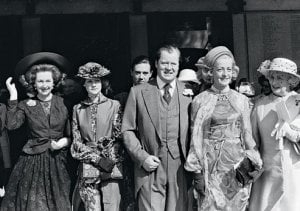
"Rose Kennedy reacted with maternal protectiveness when daughter Kathleen (known as “Kick”) fell deeply in love with Billy, Marquess of Hartington. He was a Protestant, English lord. Everything about him was alien to Rose—particularly the traditional, aristocratic beliefs that ordered his life. These were so deep-rooted that they seemed to block the possibility of his marrying Catholic Kick, even though he adored her. In such a context, Billy struggled to see how he could set religious principles to one side purely for his own marital pleasure. “I wonder if the next generation will feel that it is worth sacrificing a life’s happiness for all the old family tradition,” Rose wrote, sympathetic to Kick’s ordeal. “So much wealth, titles, etc. seem to be disappearing. But I understand perfectly the terrific responsibilities and disappointment of it all.”
Within months of receiving her mother’s letter, Kick had married this pre-eminent English aristocrat, heir to the Duke of Devonshire and the Chatsworth estate. It was the briefest of unions—after just four months Billy was killed in action, during the liberation of Belgium. Kick mourned him for four years before running away with the dashing, womanizing (and married) Peter, Earl of Fitzwilliam, owner of England’s largest private home, the 365-room Wentworth House: it had 1,000 windows, and its park wall ran for nine miles. Flying to Paris, in the optimistic hope of having her father approve marriage to her secret, Protestant lover, Kick dropped from stormy skies over France in a fatal plane crash—a precursor to Kennedy tragedies and scandals to come.
At the time, the British aristocracy as a whole was a battered institution, hardly recognizable as the all-powerful caste that had overseen an empire that spanned a quarter of the globe’s surface; this was the period when Evelyn Waugh wrote Brideshead Revisited, as an elegy to the nobility and its ancestral mansions. However, the senior aristocracy still had money and glamour—Peter Fitzwilliam’s grandfather had died one of the richest men in England, with a $21 billion fortune in today’s values, largely because his family’s 20,000 agricultural acres were found to cover one of the nation’s richest coal seams.
Kick, meanwhile, was one of the most attractive and desirable women in London—not conventionally good-looking, but blessed with a firecracker personality. If it was surprising that old Joe Kennedy’s daughter ended up a marchioness, with plans to marry again and become a countess (Joe was contemptuous of Britain and repeatedly predicted its defeat by Nazi Germany in World WarII), it was startling that her fresh and inquiring New World mind accepted the ancient aristocratic code that only a few in Britain understood, and even fewer subscribed to.
Son at the Center of the Universe
It used to be pretty simple, being a British aristocrat. A way of living developed in the years of plenty. These began in the primitive, dog-eat-dog frenzy of Henry VIII’s Tudor court (his superfluous Queens were just 2 of as many as 72,000 who lost their heads during his reign) and progressed to the languid, be-plumed pomp of Queen Victoria’s heyday.
There were blips along the way, of course: wars—even a civil war, followed by an unhappy, yet-to-be-repeated experiment with republicanism—as well as occasional economic turmoil and choking plagues on a national level. On an individual basis, there was financial incompetence, premature death from illness or on the battlefield, and just plain bad luck. However, many aristocratic families weathered the turbulence. Those that did not disappeared but were quickly replaced. The most successful dynasties were those that read the code, accepted its terms, and fused it into their DNA.
As the holder of one of the grand, hereditary titles of Britain, you merely had to do what was expected of you and then die. Succeed and grateful servants and tenants would mourn you, while even more grateful descendants would celebrate your brief flowering at the head of the family tree. You could expect, as a mark of eternal gratitude, a carved tomb in the ancestral mausoleum.
This was the upper-class representation of what Edmund Burke, the 18th-century philosopher, described as the social contract, “a partnership, not only between those who are living, but between those who are living, those who are dead, and those that are yet to be born.” This was the aristocratic code of conduct. It was still alive in 1929, when Lord Montagu of Beaulieu, owner of one of southern England’s great estates, chose as his epitaph “He loved Beaulieu, deeming his possession of it a sacred trust to be handed on to his successors in a like manner.” His successor echoed this sentiment 45 years later: “We belong to our possessions, rather than our possessions belong to us. To us, they are not wealth, but heirlooms, over which we have a sacred trust.” This remains the mission statement of traditional aristocratic families today.
So, what was the nobleman expected to do to have his life deemed a success? Ideally, he would marry “well,” which meant blending his bloodline with that of another great family, or one of less impressive pedigree but vast wealth.
He would play an enormous role in the life of his country, and would be in the select pool of several dozen families that dominated the royal court and politics, for generation after generation. (Leadership in the church or the armed services was reserved for his younger brothers.)
He would preside over the agricultural estate that stood as the cornerstone of all. The great Victorian novelist Anthony Trollope gave one of his characters the line “Land gives so much more than the rent. It gives position and influence and political power, to say nothing about the game.” This had been a truism for centuries: the ownership of land provided the great magnates with massive incomes, which funded their lifestyles and underpinned their ability to demand high office.
He would have added to the family’s art collection, his taste hopefully nurtured and refined by “the grand tour”—the exploration of Continental Europe (especially Italy and France) that young aristocrats were sent on from the mid-17th century.
He would entertain generously. This was a serious business, a duty, which would result in disgrace and derision if inadequately performed. There were two main settings for this: the country mansion (where winter was dominated by hunting with hounds and the shooting of game birds) and the London palace (where unmarried daughters were matched with eligible bachelors).
Central to this existence was a belief in, and an unquestioning adherence to, primogeniture. A few Scottish titles could pass through daughters, but nearly all the English ones devolved to the eldest son, or to the senior male heir if there was no son. With the titles went the estate—estates were “entailed,” which meant they and the family’s primary hereditary title could not be separated, even if the heir had less shining qualities than another son. Disentailment was the last resort, to take place only when the estate would inevitably be squandered by an heir who was either an out-of-control addict or insane.
The head of the family would arrange dowries for his daughters when they married, and he might give some capital to the younger sons. However, in order to keep the family’s wealth centralized and alive, preferably in perpetuity, he relied on a system that was as logically practical as it was ruthlessly clinical. One head of a very substantial aristocratic family says of primogeniture, “This is the only way of keeping estates or collections together, other than gifting to a charity. However, it can often cause feelings of guilt for the heir, or jealousy for the other children.”
Primogeniture persists in many old British families today, although not without question. Soon after he succeeded his father, in 1990, David, the Seventh Marquess of Cholmondeley, sold some family heirlooms, including a Holbein to the National Gallery, with the express purpose of providing for his sisters and other family members."
in the photo, 'The author’s parents, Earl Spencer and his first wife, Frances Shand Kydd, at the 1978 wedding of their daughter Lady Jane, with, at left, the author’s stepmother, Raine, and eldest sister, Lady Sarah, and, at right, grandmother Ruth, Lady Fermoy. From Popperfoto/Getty Images.'


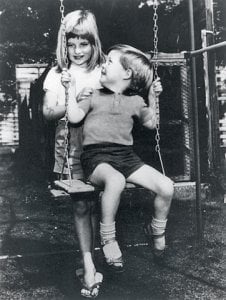
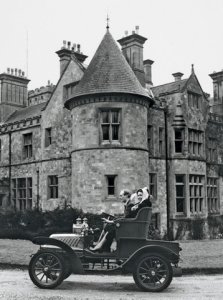

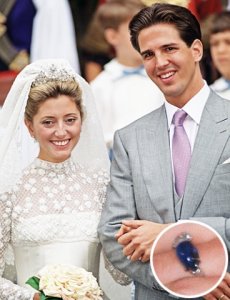
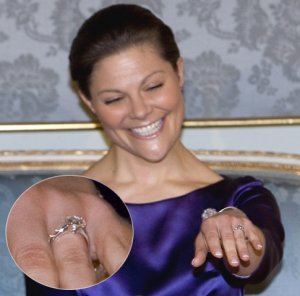
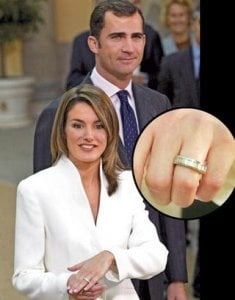

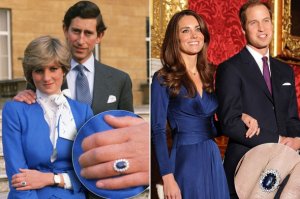
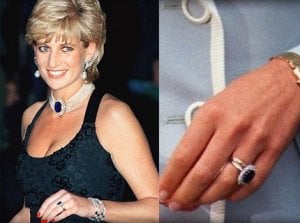
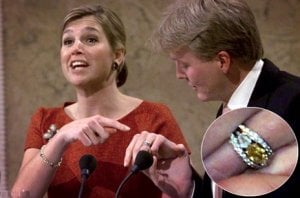
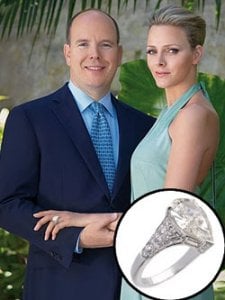
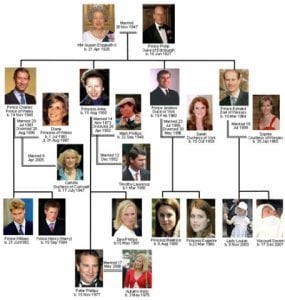
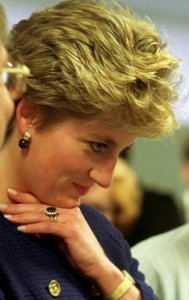
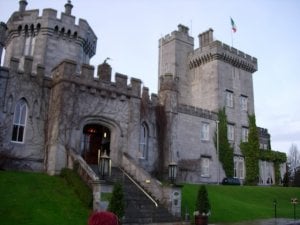
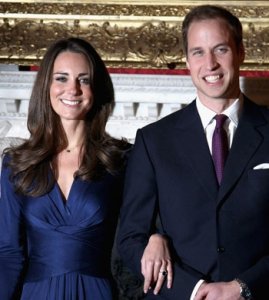
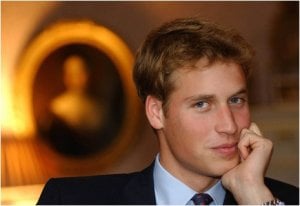

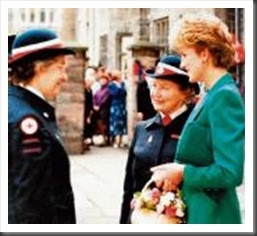
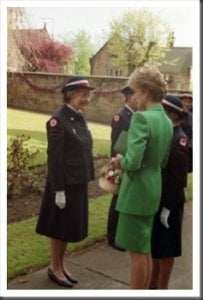
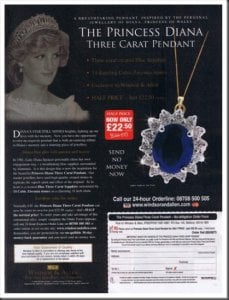
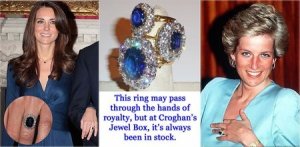
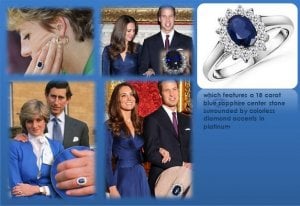
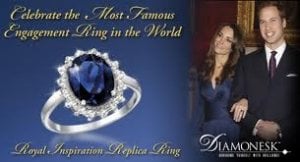
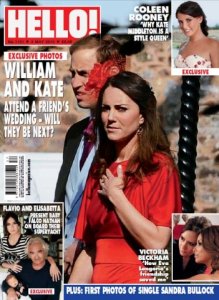
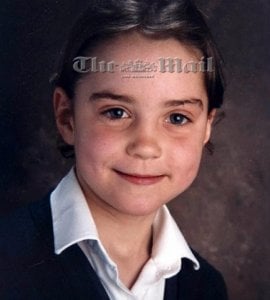
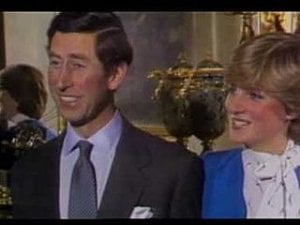
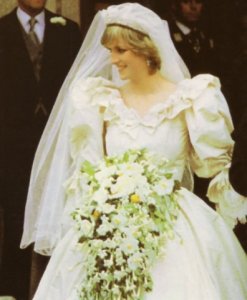
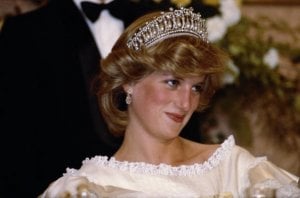
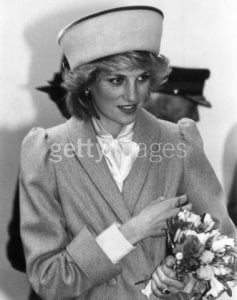
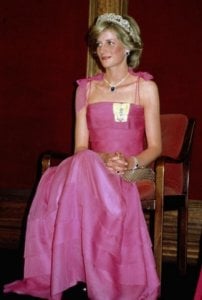
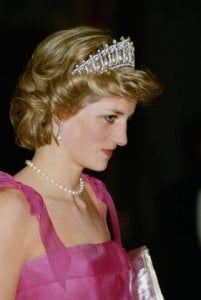

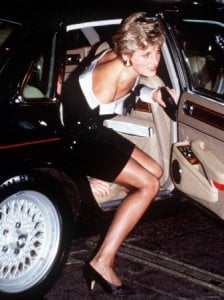
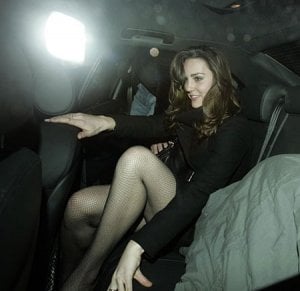
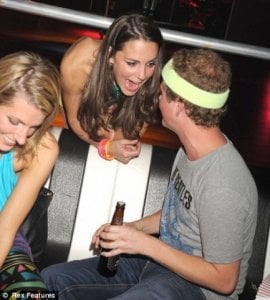
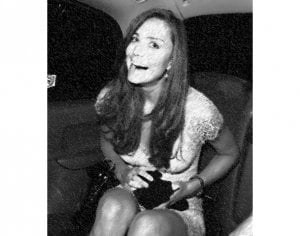
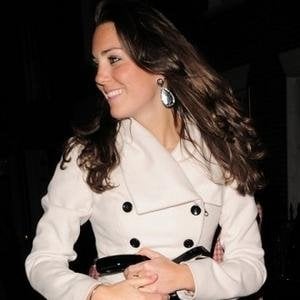
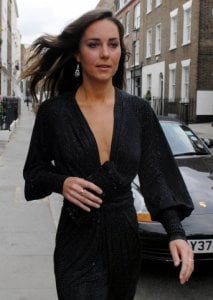
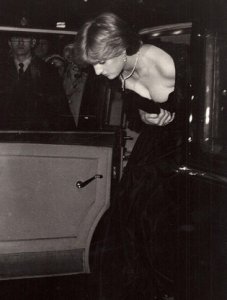


300x240.png)